Measurement of the frequency curve
Let's move on to the new measurement. Although I have still standardized the frequency curve at 1 KHz to 0 dB, on the one hand it is possible to evaluate the overall course with all encores and frequency waste and on the other hand not quite loses the comparison possibility to previous measurements. But it is still different, because the smoothing is supplemented by the almost unsmoothed representation. All of this looks clearly "more hibbeliger", of course, but also fits much better with reality. Because one thing is also clear: it does not exist, the ideal curve.
We see a slight W, i.e. the elevation in the bass range, the slight dominance in the middle, as well as the Beyer-typical peak in the high-frequency range. This is guaranteed to be so intentional and the rather broadband overemphasis in the super high tone meets especially discreet strings and percussion elements. However, the peak is still used just below Sibilants in the Aventho Wireless, so that the human voice is influenced a little by it.
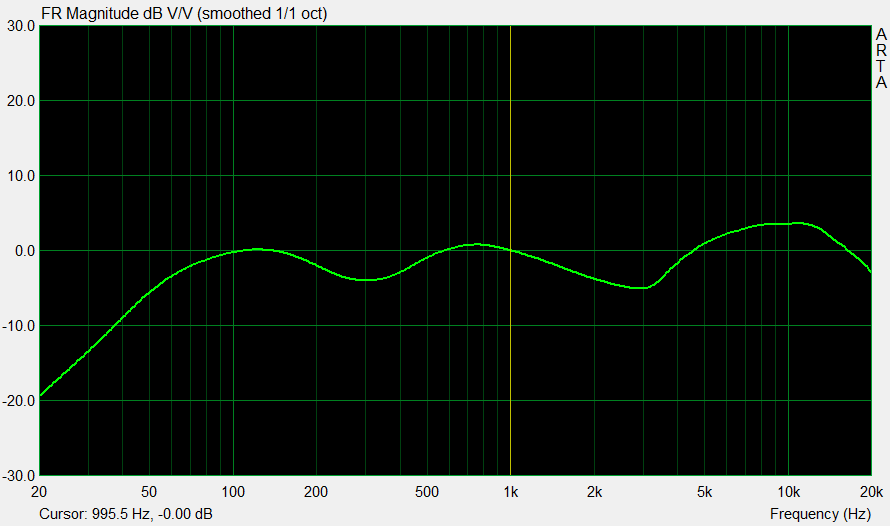
Now let's put aside the PR-compatible representation of the Nivea-smoothed wet shave and look at what the more squealing curve wants to tell us so beautifully. We see the slight dent in the lower middles, but it is not even so negative, because it also takes away the otherwise dreaded cardboard iness of the Aventho Wireless and makes everything sound very dry. This is far from analytical, but I lacked a little bit of warmth at the beginning of my Aventho career. It's just such a habitual thing.
The dent at approx. 2 to 4 KHz is in my view even very pleasant, because my ears react very sensitively here. The fact that Beyerdynamic subsequently managed to raise the high-frequency range with a kind of high plateau is a certain unique selling point. But you will be surprised to find that you can get used to this interpretation very quickly and it definitely doesn't bother you. On the contrary.
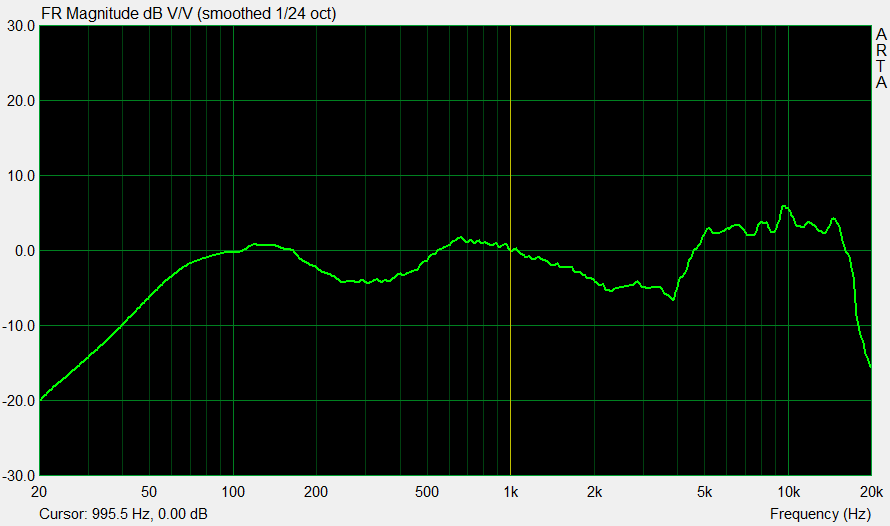
Cumulative Spectra (CSD and SFT)
The cumulative spectrum denotes different types of diagrams that show time-frequency properties of the signal. They are generated by successive application of the Fourier transformation and suitable windows to overlapping signal blocks. These analyses are based on the frequency response diagram already shown above, but also contain the element time and now show as a 3D graphic ("waterfall") very clearly how the frequency response develops over time after the input signal stopped. In colloquial terms, such a thing is also called "end" or "swingout".
Normally, the driver should also stop as fast as possible after the input signal has been dropped. However, some frequencies (or even entire frequency ranges) will always subside slowly and then continue to appear in this chart as longer-lasting frequencies on the timeline. This is a good way to see where the driver has glaring weaknesses, perhaps even "squealing" or where, in the worst case, resonances occur and could disturb the overall picture.
We will now test two types of cumulative spectrum:
Cumulative Spectral Decay (CSD)
Cumulative spectral decay (CSD) uses the FFT and a modified rectangular window to analyze the spectral drop of the pulse response. It is mainly used to analyze the speaker or driver pulse response. The CSD typically uses only a small FFT block shift (2-10 samples) to make resonances more visible throughout the frequency range, making it a useful tool for detecting the resonant of the converter.
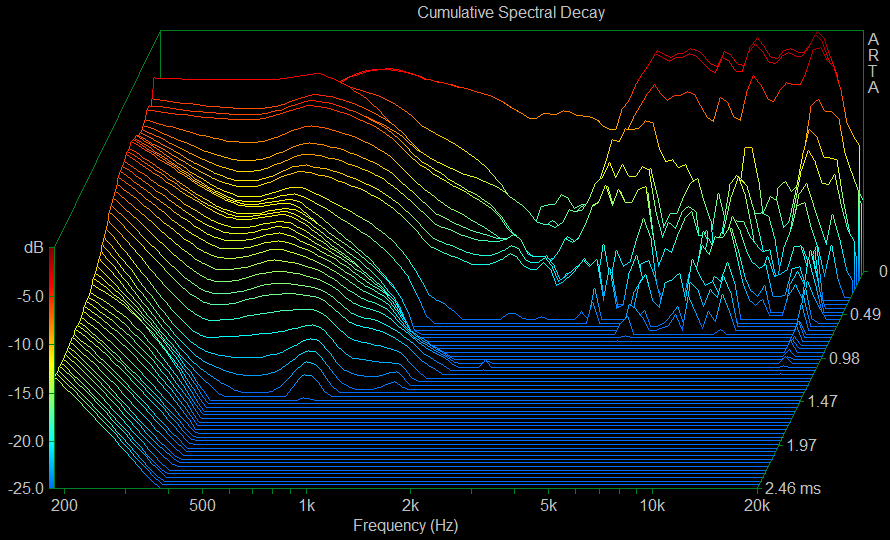
Short-time Fourier Transform (STF)
The Short-Time Fourier Transformation (STF) uses the FFT and Hanning windows to analyze the time-varying spectrum of recorded signals. In general, a larger block shift (1/4 to 1/2 of the FFT length) is used to analyze a larger part of the time-variable signal spectrum, whereby one gets closer to the fields of application such as language and music.
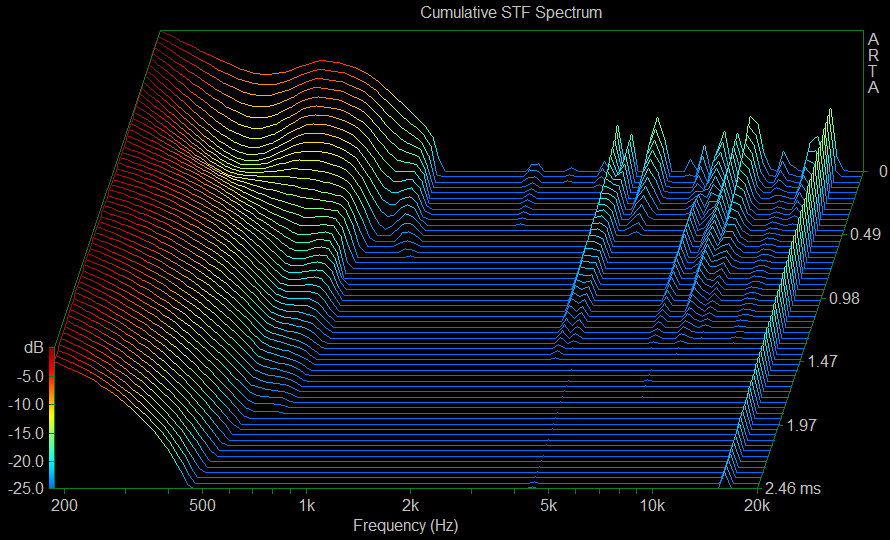
The picture at the Aventho Wireless is good, but you can also see very nicely where the above mentioned sounding starts. The high and super high tone stay a little longer like a block and thus actually a little longer in the ear. In relation to the reached level, however, this behavior is to be put into perspective, because at 1 ms (CSD) also the last beeps have disappeared again, only the upper bass and the foundation underneath may roll out something. In the STF spectrum, we can clearly see the very specific tweeter interpretation of the Tesla drivers installed.
What you can and must certify to the Aventho Wireless is an almost grandiose settling behavior, because even the driest impulse comes without setting up and as if shot from the hip to the desired point. The "small" drivers are extremely fixed and in sum nothing drags on. The impulse fidelity is excellent, even if there are of course still better specimens. But that, in turn, is always the big price question. However, for a mobile device without a large tin top, the values are really good.
Subjective listening experience
Let's also test subjectively what you have in the original on your ear. I used the Aventho Wireless intensively over a long period of time (long distance and gaming evenings on the cable), which should take the wind out of the sails even the most hardened one-game fanatics, because there are already some hours of operation coming together.
Bass
Test the lowest bass in the subcontraoctave (16.4 Hz to 32.7 Hz) with a recording of Bach's Toccata and Fugue in D minor (19 and 25 Hz) and the Festival Overture 1812 by Tchaikovsky (10 Hz and 12.5 Hz). The same applies to the lower ranges of the contraoctothe (32.7 to 65.4 Hz). The big bass drum (kick drum), which in the U-music is a welcome companion and usually on approx. 55 to 60 Hz, this assessment will then be rounded off.
The bass is good, sufficiently deep and very present down to the big bass drum, without appearing pointlessly loud or over-present. He's just there, no frills and dislocations. The subcontraoctave, however, is already weakening a little, but remains clean, differentiated and very dry even with a delayed, manual increase. It's a relaxed over-ear, you can't expect earthquakes.
The upper bass up to 150 Hz, in which also the Great Octave (65.4 to 130.8 Hz) is located, houses the basic language frequency of the male voice and decides very strongly on the true-to-life reproduction of male vocals.
This area sounds absolutely natural and extremely selective, which makes the voice reproduction of male voices an experience. These vocals are almost unlimited in volume and seem very natural. The entire bass range up to the upper bass plays confidently, very concisely and somewhat cool, whereby the lower middles are pushed away by this dominance. What the Tesla drivers really can do is play a true-to-life rendition of a very wide-band sound carpet, where no area tries to dispose of the other.
The instruments are in no way inferior to the vocals in this section and in gaming you have the usual battle noise as a very solid foundation wall, but without killing and obliterating the rest with it. However, in direct comparison it is rather something for music lovers, because the MMX 300 is simply a class better when it comes to gambling.
Frequency range
The lower middles (also basic tone range) are approx. 150 to 400 Hz. Together with the already mentioned upper bass, this area plays a very important role for the subjectively perceived heat or bass. Fullness of the sound. The basic language frequency of female voices can be found in this area.
Female vocals still sound emancipated enough and at least acoustically, the gender delusion enjoys a glass of the achieved near-parity. Well, then prost! At approx. 300 Hz is reached the low point of a small valley, which pushes a few instruments into cool, because the basic frequency regresses a small step. But there is audibly nothing missing, except for a little homely warmth, which one would always like when it pulls too nasty at the gate.
The upper mids between 400 Hz and about two KHz contain a mark at a KHz, which is still considered a reference for many measurements. Unfortunately, this is often noticeable with cheaper devices, as manufacturers often try to overemphasize this frequency. This area does not play an insignificant role in gaming either, and balanced playback contributes significantly to good spatial resolution.
This area is, in fact, the highlight and free from any criticism. The depth staggering is not quite as extreme as you might think, but for such a headphone it fits perfectly. The location of individual instruments (or sources) is good and sovereign. For gaming, the stage is sufficiently sized and still better than almost anything that normal gaming consoles promise (and almost always don't keep). The Aventho Wireless is at least honest.
High-pitched range
Between two and about 3.5 KHz, human hearing is most sensitive, especially since this area of the lower heights is responsible for the good overtone reproduction of the human voice. This frequency range is crucial for the recognition of a voice or instrument; in this context, one also speaks of the respective timbre.
The small dent between two and five KHz sounds as intended, because it colors a lot of the overtone very warm and soft and compensates for the tiny weaknesses in the fundamental tone range. All vocals and instruments remain very natural and are staged very confidently. Relaxed and yet precise, that should at least sound like this, and you have easily reached the goal here.
The middle heights (3.5 to six KHz) decide on the sound or failure of the speech reproduction as a whole, because the S- and hissing (Sibilants) fall into this range. The upper heights then reach up to approx. ten KHz to move into the super high tone.
I already wrote about the high plateau heel in the diagrams and it is a very idiosyncratic interpretation, but it does not whip a few frequencies forward, but captures a wider spectrum up to the super high tone in equal measure. This makes things almost exciting again and the listened to is plentiful crispy. Once you get used to the Crisp, you almost don't want to miss it anymore. Güttler's Bach trumpet sounds just as confident here as with the Tractrix horns of my Clipsch monitors.
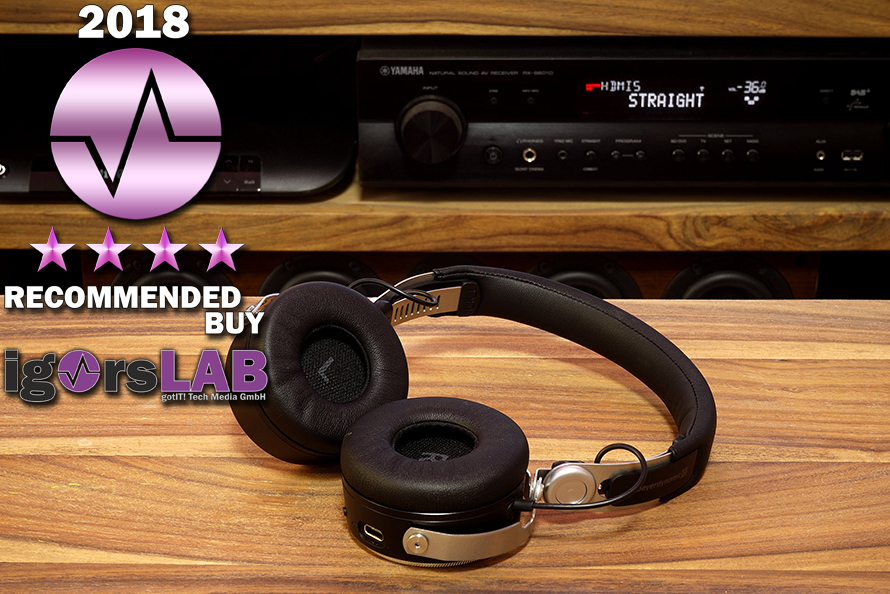
Summary and conclusion
Let's leave aside the price of 430 euros and more, then the Aventho Wireless is well suited to exert an almost brutal purchase compulsion, because in this case the fascination is still completely on my side even after months. If you add the price, it is still a good headphone, but you have to be able to afford it. This is then a question of conscience as to whether one can answer for it in front of oneanother (and the better half). After all, we are talking here about half a thousand for a headphone on the way.
However, the added value is revealed in detail when one really deals more intensively with the object. Let's leave aside the somewhat unfinished app, then the Aventho Wireless impresses with a well thought-out touch concept, the individual tuning of the headphones according to its own (biological) listening possibilities, two very long-term stable and excellent tonal ear pads and a very high wearing comfort.
I have already written enough about the high-quality material appearance and the sovereign sound, too much praise could also lead to complacency at the manufacturer. And no one wants that, don't they?































Kommentieren